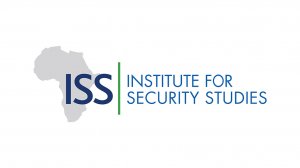It has been almost a year since the Cessation of Hostilities Agreement (CoHA) ended a two-year civil war in northern Ethiopia. The clashes inflicted grave consequences on the country, giving rise to a large-scale humanitarian crisis, mass starvation and atrocities.
The conflict saw one side comprising the Ethiopian National Defense Force, Eritrean Defense Forces, regional special forces (typically Amhara and Afar), and ethnic militias (the ‘Fano’), and another consisting of the Oromo Liberation Army and Tigray People’s Liberation Front. Many observers deem this the deadliest conflict in the country’s recent history.
The current realignment of these forces, which is propelling the country to war, proves that bilateral peacemaking attempts failed to mitigate the conflicts. Consequently, the imperative of instituting a comprehensive peace process is now more pronounced than ever.
The signing of the CoHA between Tigrayan forces and the federal government in November 2022 ushered in a fresh dawn of optimism. The period saw commendable peacemaking initiatives. These included beginning negotiations with the Oromo Liberation Army, peace talk efforts with local armed groups in the Amhara, Benishangul and Gambela regions, launching the Transitional Justice initiative, and attempts to re-engage defectors to the National Dialogue processes.
However, it wasn’t long before the country again succumbed to a full-blown conflict. As a result of the agreement, the normalisation of relations between Tigray and the Government of Ethiopia saw a simultaneous rupture between the Amhara and the federal government.
The federal government’s move to ‘reorganise’ regional security apparatuses to build one strong, centralised army was especially met with strong resistance from the Amhara. They claimed the decision would leave them susceptible to aggression.
The resistance, some Amhara nationalists claimed, was necessary in light of their longstanding concerns that encompass ethnic cleansing, killings of ethnic Amharas in neighbouring regions, and territorial disputes in Wolqayit and Raya Azebo.
Observers regard the instability in Amhara as locals’ reaction to the threats posed by neighbouring regional forces in Oromia and Tigray. Many point to mounting doubts among the Amhara about the federal government’s ability to fulfil its role as a primary security provider. Beyond opposing the dismantling of the Amhara regional force, some Amhara opposition parties demanded arms provision for their brothers living in hostile regions, namely Oromia and Benishangul.
The federal government’s response severely downplayed the concerns raised. Speaking at a state of emergency general command press briefing, Director-General of Ethiopia’s National Intelligence and Security Service, Temesgen Tiruneh, former Amhara Region president, said the unrest was a ‘disruption of peace orchestrated by an organised robbery group.’
He accused the armed groups of being enemies of the people trying to dismantle the regional government and federal system. So the government condemned the resistance as an effort to obstruct its attempts to address the population's concerns and work towards national unity.
On another front, after failed negotiations and peace talks between the federal government and Oromo Liberation Army in Tanzania, the fight between the two parties has intensified. Though the initial discussions in early May were concluded without agreement, both parties indicated some progress was made.
Yet the parties resumed armed confrontations soon after, and the promises for continuing talks were never realised. The security situation in Oromia remains highly volatile, with recent reports indicating that the Oromo Liberation Army was expanding its turf well beyond its strongholds in the region’s Western parts.
Nonetheless, there seems to be consensus from both sides on the need for peace. Though federal authorities accuse the Oromo Liberation Army of causing mayhem in the region, the army has reiterated its commitment to use peaceful means to end its decades-long insurgency. Federal authorities have also demonstrated a willingness to resolve the conflict peacefully. Still, these will remain empty words if both parties fail to implement concrete steps to build confidence.
It is crucial to foster a conducive environment for implementing a national reconciliation strategy through de-escalation, proportional and effective disarmament of regions, and local dialogue that addresses citizens’ real and perceived threats. Measures must be taken to ensure the participation of all major players in the ongoing national dialogue process and other peacebuilding initiatives.
The clash between the federal government and armed groups results from a confluence of factors. But at the root of it lie two reasons.
First, the ingrained mistrust among regions on the one hand, and between regions and the federal government on the other. This originates from longstanding interregional and ethnic conflicts. Disarming certain regional forces without addressing the causes of non-state rivalries will be met with resistance, as in Amhara’s case. Second, the design of peace processes that don’t include all major players will run into problems during implementation, and cannot offer lasting peace.
Ethiopia’s complicated conflict landscape is characterised by an entanglement of rival factions. Responses must address both vertical conflicts (between different actors and the state) and horizontal ones (among non-state actors). The clashes since the CoHA, with the realignment of forces that were actors in the North Ethiopian war, show why an all-inclusive peace process is essential.
This calls for a thorough, context-specific mapping of actors and their grievances. That exercise can inform the design of a localised, multicultural and flexible national reconciliation strategy that brings together multiple actors to address vertical and horizontal grievances.
Written by Fikir G Mekonen, Consultant, Moussa Soumahoro, Researcher and Zenaw Alem, Consultant, ISS Addis Ababa
EMAIL THIS ARTICLE SAVE THIS ARTICLE ARTICLE ENQUIRY
To subscribe email subscriptions@creamermedia.co.za or click here
To advertise email advertising@creamermedia.co.za or click here











